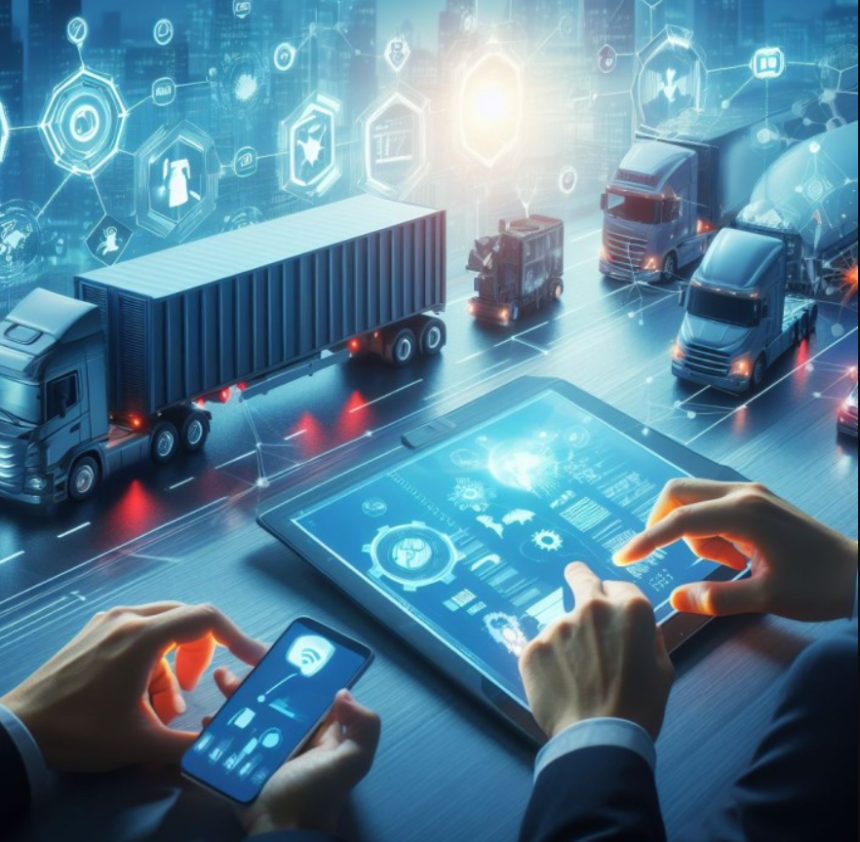Step into a world where the future of transportation is unfolding before our very eyes, powered by the relentless pace of technological innovation. The telematics revolution is the new frontier, blending cutting-edge communication and information tech into the heart of our vehicles. It’s a game-changer, a paradigm shift in how we perceive the journey from A to B. Let’s embark on an exhilarating exploration into the realm of telematics, uncovering its transformative effects on transportation and the ripples it sends across various industries.
Understanding Telematics
At the core, what is telematics? Picture a melting pot where “telecommunications” meets “informatics.” Telematics is the art of sending data across vast distances, marrying GPS wizardry with the diagnostic smarts of vehicles. In simple terms, think of your car as a smartphone on wheels. It’s no longer just your ride; it’s a nerve center of data and digital connections. Telematics systems are the maestros, orchestrating a symphony of data from the vehicle’s numerous sensors, and broadcasting it to a central hub through cellular or satellite channels.
The Rise of Connected Cars
One of the most visible outcomes of the telematics revolution is the emergence of connected cars. These are vehicles equipped with internet connectivity and a range of sensors that enable them to communicate with other vehicles, infrastructure, and even pedestrians. The implications of this technology are far-reaching.
- Enhanced Safety: Connected cars have the potential to make our roads safer. Advanced driver assistance systems (ADAS) can analyze real-time data to provide warnings or take corrective actions, helping drivers avoid accidents. For example, if your car senses an impending collision, it can apply the brakes automatically.
- Efficiency and Convenience: Telematics systems can optimize routes, saving time and fuel. They can also provide valuable information to drivers, such as real-time traffic updates, nearby gas stations, or available parking spaces. Imagine never having to circle the block in search of a parking spot again.
- Maintenance and Diagnostics: Your car can now monitor its own health. Telematics systems can detect potential issues and alert you or your mechanic before a breakdown occurs. This proactive approach to maintenance can save both time and money.
- Insurance Benefits: Some insurance companies offer usage-based insurance (UBI) policies that leverage telematics data to determine premiums. Safe drivers can enjoy reduced rates, as their behavior is tracked and rewarded.
Beyond Transportation: Telematics in Other Industries
While the impact of telematics on transportation is undeniable, its influence extends far beyond our roads. Let’s explore how this technology is making waves in various sectors.
- Logistics and Fleet Management: Telematics is a game-changer for logistics companies. Fleet managers can track their vehicles’ locations, monitor driver behavior, and optimize delivery routes in real time. This not only improves efficiency but also reduces operational costs.
- Construction and Heavy Equipment: Telematics isn’t limited to cars. Heavy machinery used in construction and agriculture can also benefit from this technology. It allows equipment operators to track usage, schedule maintenance, and prevent theft.
- Healthcare: In the healthcare sector, telematics plays a vital role in patient care. Ambulances equipped with telematics systems can transmit patient data to hospitals before arrival, allowing medical staff to prepare accordingly. This can be a matter of life and death in critical situations.
- Environmental Monitoring: Telematics can be used to collect data on air quality, weather conditions, and pollution levels. This information is invaluable for environmental agencies and researchers working to address climate change and pollution.
Challenges and Concerns
Every silver lining has a cloud, and in the world of telematics, it’s about privacy and security. The idea of vehicles being under constant surveillance sparks debates over data ownership and access. It’s a tightrope walk between safety and privacy.
Moreover, as cars turn into rolling computers, they also become magnets for cyber threats. Ensuring robust cybersecurity in this interconnected landscape is a top priority for automakers, as the safety of these systems is non-negotiable.
The Road Ahead
The telematics tide is rushing forward, and it’s bringing a future filled with possibilities:
- Autonomous Vehicles: Telematics will be the backbone of self-driving cars, relying on a deluge of data for safe navigation.
- Smart Cities: Envision a world where your car chats with traffic lights and parking meters, easing congestion and enhancing city life.
- Green Horizons: As environmental concerns escalate, telematics steps in to promote eco-friendly driving and lower emissions.
- Global Reach: With the rise of 5G and satellite tech, telematics will connect vehicles and devices worldwide like never before.
Conclusion
The telematics revolution is more than a technological marvel; it’s a seismic shift in our transportation narrative and beyond. From connected cars to safety and efficiency leaps, the impact is profound. It transcends transportation, making waves in sectors like healthcare and logistics. Navigating privacy and security waters will be key as we embrace this interconnected era. As we gaze into the telematics crystal ball, the future holds autonomous vehicles, smart cities, and sustainable living. The journey ahead is charged with innovation, with telematics at the helm, guiding us towards a bold, interconnected world. So fasten your seatbelts – the telematics revolution is here, steering us towards an exhilarating future we’re only just beginning to grasp.














